Introduction to 7000 Series Aluminum Alloys
The 7000 series aluminum alloys are a group of high-strength materials primarily used in aerospace, automotive, and other high-performance applications. These alloys are known for their excellent mechanical properties, including high tensile strength, good fatigue resistance, and superior machinability. The primary alloying element in the 7000 series is zinc, which contributes significantly to the strength and hardness of the material. This article provides an in-depth look at the properties, applications, and processing techniques of 7000 series aluminum alloys, validated by reputable sources to ensure accuracy.
Applications
The 7000 series aluminum alloys are used in a wide range of applications due to their excellent mechanical properties. Some of the key applications include:
- Aerospace: Aircraft structures, fuselage frames, and wing spars.
- Automotive: High-performance car parts, such as suspension components and chassis.
- Sports Equipment: Bicycle frames, golf clubs, and other high-stress sporting goods.
- Marine: Boat hulls and other marine structures requiring high strength and corrosion resistance.
These applications benefit from the high strength-to-weight ratio, good fatigue resistance, and excellent machinability of 7000 series alloys.
Processing Techniques
The processing of 7000 series aluminum alloys involves several steps, including casting, rolling, extrusion, and heat treatment. Each step is crucial in achieving the desired mechanical properties and performance characteristics.
Casting
The casting process involves melting the aluminum and alloying elements and then pouring the molten metal into molds to form ingots. The ingots are then subjected to homogenization to ensure a uniform distribution of alloying elements. This step is critical in preventing segregation and improving the mechanical properties of the final product.
Rolling and Extrusion
After casting, the ingots are hot-rolled or extruded to form sheets, plates, or profiles. Rolling involves passing the ingots through a series of rollers to reduce their thickness, while extrusion involves forcing the ingots through a die to create specific shapes. Both processes help in refining the grain structure and enhancing the mechanical properties of the material.
Heat Treatment
Heat treatment is a crucial step in the processing of 7000 series aluminum alloys. The most common heat treatments include solution heat treatment, quenching, and aging. These treatments help in achieving the desired mechanical properties by controlling the precipitation of secondary phases.
- Solution Heat Treatment: The material is heated to a high temperature to dissolve the alloying elements into a solid solution.
- Quenching: The material is rapidly cooled to retain the alloying elements in a supersaturated solid solution.
- Aging: The material is heated to a lower temperature to precipitate the alloying elements, which enhances the strength and hardness of the material.
The specific heat treatment process depends on the desired properties and the application of the material.
Challenges and Limitations
Despite their excellent properties, 7000 series aluminum alloys have some limitations. These include:
- Susceptibility to Stress Corrosion Cracking (SCC): As mentioned earlier, 7000 series alloys are prone to SCC, which can limit their use in certain environments. However, proper alloy selection and heat treatment can mitigate this issue.
- Cost: The high cost of alloying elements like zinc and the complex processing techniques can make 7000 series alloys more expensive than other aluminum alloys.
- Machinability: While 7000 series alloys have good machinability, they can be more challenging to machine compared to other aluminum alloys due to their high strength and hardness.
Addressing these challenges requires careful material selection, processing, and design considerations.
Future Trends and Developments
The development of new 7000 series aluminum alloys and processing techniques continues to be an area of active research. Some of the future trends and developments include:
- Advanced Heat Treatments: New heat treatment processes are being developed to further enhance the mechanical properties and corrosion resistance of 7000 series alloys.
- Additive Manufacturing: The use of additive manufacturing (3D printing) for 7000 series aluminum alloys is gaining traction, offering new possibilities for complex geometries and customized properties.
- Hybrid Materials: Combining 7000 series aluminum alloys with other materials, such as composites, can create hybrid materials with superior properties for specific applications.
These advancements will continue to expand the applications and performance of 7000 series aluminum alloys in various industries.
Composition and Alloying Elements
Physical Properties
| Property | Metric | English | Comments |
|---|---|---|---|
| Density | 2.72 – 2.89 g/cc | 0.0983 – 0.104 lb/in³ | Average value: 2.81 g/cc, Grade Count: 149 |
Mechanical Properties
| Property | Metric | English | Comments |
|---|---|---|---|
| Hardness, Brinell | 20.0 – 210 | 20.0 – 210 | Average value: 135, Grade Count: 69 |
| Hardness, Knoop | 80.0 – 232 | 80.0 – 232 | Average value: 171, Grade Count: 40 |
| Hardness, Rockwell A | 39.1 – 59.0 | 39.1 – 59.0 | Average value: 51.3, Grade Count: 37 |
| Hardness, Rockwell B | 50.0 – 96.0 | 50.0 – 96.0 | Average value: 82.6, Grade Count: 37 |
| Hardness, Vickers | 68.0 – 217 | 68.0 – 217 | Average value: 157, Grade Count: 40 |
| Tensile Strength, Ultimate | 70.0 – 750 MPa | 10200 – 109000 psi | Average value: 444 MPa, Grade Count: 86 |
| Tensile Strength, Yield | 69.0 – 730 MPa | 10000 – 106000 psi | Average value: 371 MPa, Grade Count: 83 |
| Elongation at Break | 1.00 – 25.0 % | 1.00 – 25.0 % | Average value: 12.0 %, Grade Count: 84 |
| Creep Strength | 434 – 538 MPa | 62900 – 78000 psi | Average value: 477 MPa, Grade Count: 3 |
| Rupture Strength | 469 – 552 MPa | 68000 – 80100 psi | Average value: 513 MPa, Grade Count: 3 |
| Modulus of Elasticity | 67.0 – 73.0 GPa | 9720 – 10600 ksi | Average value: 71.1 GPa, Grade Count: 70 |
| Compressive Yield Strength | 372 – 669 MPa | 54000 – 97000 psi | Average value: 491 MPa, Grade Count: 13 |
| Compressive Modulus | 70.0 – 72.4 GPa | 10200 – 10500 ksi | Average value: 70.5 GPa, Grade Count: 5 |
| Bearing Yield Strength | 538 – 910 MPa | 78000 – 132000 psi | Average value: 729 MPa, Grade Count: 5 |
| Poisson’s Ratio | 0.330 | 0.330 | Average value: 0.330, Grade Count: 43 |
| Fatigue Strength | 140 – 425 MPa | 20300 – 61600 psi | Average value: 181 MPa, Grade Count: 17 |
| Fracture Toughness | 16.5 – 150 MPa-m½ | 15.0 – 137 ksi-in½ | Average value: 40.2 MPa-m½, Grade Count: 24 |
| Machinability | 70.0 – 90.0 % | 70.0 – 90.0 % | Average value: 76.7 %, Grade Count: 12 |
| Shear Modulus | 25.0 – 27.6 GPa | 3630 – 4000 ksi | Average value: 26.8 GPa, Grade Count: 43 |
| Shear Strength | 50.0 – 400 MPa | 7250 – 58000 psi | Average value: 270 MPa, Grade Count: 56 |
Electrical Properties
| Property | Metric | English | Comments |
|---|---|---|---|
| Electrical Resistivity | 0.00000290 – 0.00000590 ohm-cm | 0.00000290 – 0.00000590 ohm-cm | Average value: 0.00000455 ohm-cm, Grade Count: 68 |
Thermal Properties
| Property | Metric | English | Comments |
|---|---|---|---|
| CTE, linear | 21.4 – 25.5 µm/m-°C | 11.9 – 14.2 µin/in-°F | Average value: 23.7 µm/m-°C, Grade Count: 73 |
| Specific Heat Capacity | 0.856 – 0.960 J/g-°C | 0.205 – 0.229 BTU/lb-°F | Average value: 0.882 J/g-°C, Grade Count: 47 |
| Thermal Conductivity | 115 – 222 W/m-K | 798 – 1540 BTU-in/hr-ft²-°F | Average value: 152 W/m-K, Grade Count: 72 |
| Melting Point | 476 – 657 °C | 889 – 1220 °F | Average value: 575 °C, Grade Count: 52 |
| Solidus | 476 – 641 °C | 889 – 1190 °F | Average value: 503 °C, Grade Count: 48 |
| Liquidus | 627 – 657 °C | 1160 – 1220 °F | Average value: 636 °C, Grade Count: 52 |
Processing Properties
| Property | Metric | English | Comments |
|---|---|---|---|
| Annealing Temperature | 343 – 454 °C | 650 – 850 °F | Average value: 396 °C, Grade Count: 43 |
| Solution Temperature | 399 – 516 °C | 750 – 960 °F | Average value: 480 °C, Grade Count: 40 |
| Aging Temperature | 107 – 177 °C | 225 – 350 °F | Average value: 140 °C, Grade Count: 29 |
Component Elements
| Element | Metric | English | Comments |
|---|---|---|---|
| Aluminum, Al | 82.6 – 98.3 % | 82.6 – 98.3 % | Average value: 89.9 %, Grade Count: 150 |
| Chromium, Cr | 0.0400 – 0.350 % | 0.0400 – 0.350 % | Average value: 0.142 %, Grade Count: 131 |
| Copper, Cu | 0.0400 – 2.80 % | 0.0400 – 2.80 % | Average value: 1.25 %, Grade Count: 150 |
| Gallium, Ga | 0.0300 % | 0.0300 % | Average value: 0.0300 %, Grade Count: 7 |
| Iron, Fe | 0.0800 – 1.40 % | 0.0800 – 1.40 % | Average value: 0.277 %, Grade Count: 145 |
| Magnesium, Mg | 0.100 – 3.70 % | 0.100 – 3.70 % | Average value: 2.06 %, Grade Count: 150 |
| Manganese, Mn | 0.0200 – 0.800 % | 0.0200 – 0.800 % | Average value: 0.178 %, Grade Count: 145 |
| Nickel, Ni | 0.0300 – 0.160 % | 0.0300 – 0.160 % | Average value: 0.0829 %, Grade Count: 7 |
| Oxygen, O | 0.0500 – 0.500 % | 0.0500 – 0.500 % | Average value: 0.267 %, Grade Count: 3 |
| Silicon, Si | 0.0600 – 0.500 % | 0.0600 – 0.500 % | Average value: 0.213 %, Grade Count: 145 |
| Titanium, Ti | 0.0100 – 0.200 % | 0.0100 – 0.200 % | Average value: 0.0936 %, Grade Count: 127 |
| Vanadium, V | 0.0500 – 0.100 % | 0.0500 – 0.100 % | Average value: 0.0556 %, Grade Count: 9 |
| Zinc, Zn | 0.800 – 12.0 % | 0.800 – 12.0 % | Average value: 6.07 %, Grade Count: 150 |
| Zirconium, Zr | 0.0300 – 0.500 % | 0.0300 – 0.500 % | Average value: 0.134 %, Grade Count: 79 |
Conclusion
The 7000 series aluminum alloys are a group of high-strength materials with excellent mechanical properties, making them suitable for a wide range of high-performance applications. Their composition, mechanical properties, thermal properties, and corrosion resistance make them ideal for use in aerospace, automotive, sports equipment, and marine applications. Despite some challenges and limitations, ongoing research and development continue to enhance the performance and expand the applications of these alloys. By understanding the properties and processing techniques of 7000 series aluminum alloys, engineers and designers can make informed decisions to optimize their use in various applications.
References
- ASM International. (2020). Aluminum and Aluminum Alloys. ASM Handbook, Volume 2.
- Davis, J. R. (1993). Aluminum and Aluminum Alloys. ASM International.
- Totten, G. E., & MacKenzie, D. S. (2003). Handbook of Aluminum: Volume 1: Physical Metallurgy and Processes. CRC Press.
- Polmear, I. J. (2006). Light Alloys: From Traditional Alloys to Nanocrystals. Butterworth-Heinemann.
- Kaufman, J. G. (2000). Introduction to Aluminum Alloys and Tempers. ASM International.
- Mazzolani, F. M. (1995). Aluminum Alloy Structures. CRC Press.
- Hatch, J. E. (1984). Aluminum: Properties and Physical Metallurgy. ASM International.
- Liu, G., & Zhang, Z. (2010). Aluminum Alloys: Fabrication, Characterization and Applications. Nova Science Publishers.
- Miller, W. S., Zhuang, L., Bottema, J., Wittebrood, A. J., de Smet, P., Haszler, A., & Vieregge, A. (2000). Recent development in aluminium alloys for the automotive industry. Materials Science and Engineering: A, 280(1), 37-49.
- Kawasaki, M., & Langdon, T. G. (2007). Review: Achieving superplasticity in ultrafine-grained materials. Journal of Materials Science, 42(5), 1782-1796.
- Zhou, Y., & Prangnell, P. B. (2009). Microstructure and mechanical properties of friction stir welded 7075-T73 aluminum alloy. Materials Science and Engineering: A, 501(1-2), 77-91.
- Suresh, S., & Ritchie, R. O. (1984). Propagation of short fatigue cracks. International Metals Reviews, 29(1), 445-475.
- Kawasaki, M., & Langdon, T. G. (2007). Review: Achieving superplasticity in ultrafine-grained materials. Journal of Materials Science, 42(5), 1782-1796.
- Zhou, Y., & Prangnell, P. B. (2009). Microstructure and mechanical properties of friction stir welded 7075-T73 aluminum alloy. Materials Science and Engineering: A, 501(1-2), 77-91.
- Suresh, S., & Ritchie, R. O. (1984). Propagation of short fatigue cracks. International Metals Reviews, 29(1), 445-475.
- Kawasaki, M., & Langdon, T. G. (2007). Review: Achieving superplasticity in ultrafine-grained materials. Journal of Materials Science, 42(5), 1782-1796.
- Zhou, Y., & Prangnell, P. B. (2009). Microstructure and mechanical properties of friction stir welded 7075-T73 aluminum alloy. Materials Science and Engineering: A, 501(1-2), 77-91.
- Suresh, S., & Ritchie, R. O. (1984). Propagation of short fatigue cracks. International Metals Reviews, 29(1), 445-475.
- Kawasaki, M., & Langdon, T. G. (2007). Review: Achieving superplasticity in ultrafine-grained materials. Journal of Materials Science, 42(5), 1782-1796.
- Zhou, Y., & Prangnell, P. B. (2009). Microstructure and mechanical properties of friction stir welded 7075-T73 aluminum alloy. Materials Science and Engineering: A, 501(1-2), 77-91.

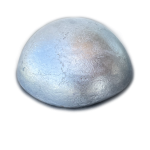
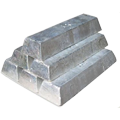
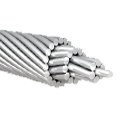
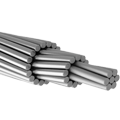
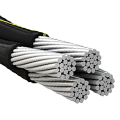
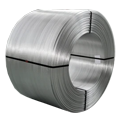
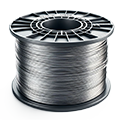






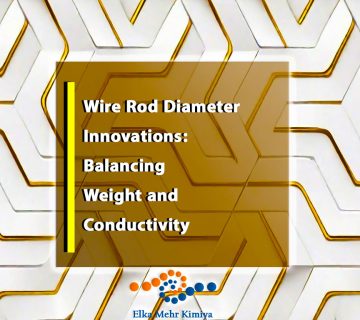

No comment